PREVIOUS
SDG Goal wise programs of India – Part 05
SDG Goal wise programs of India – Part 05
(இதன் தமிழ் வடிவத்திற்கு இங்கே சொடுக்கவும்)
Pradhan Mantri Kisan Samman Nidhi (PM-KISAN)
Launched:
- 1st December 2018.
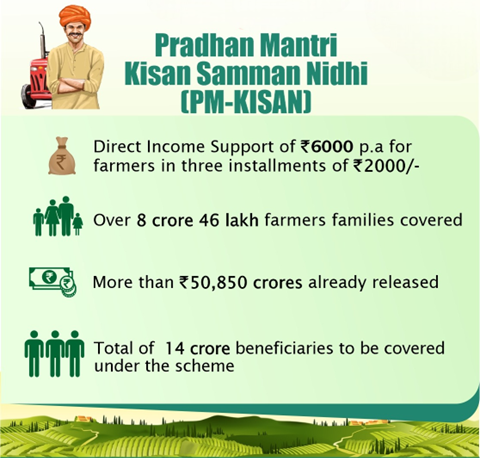
Ministry or Nodal Agency:
- Ministry of Agriculture & Farmers Welfare, Government of India
Objectives
- The PM-KISAN Scheme was launched with the goal of providing income support to eligible farmer families.
- The scheme aims to help these families to meet the financial needs of procuring inputs for farming, ensuring proper crop health, and achieving anticipated farm yields.
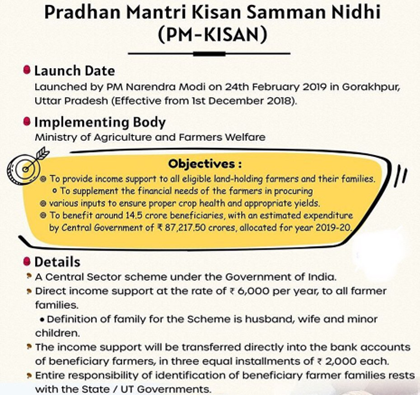
Beneficiaries
- The scheme is targeted at landholding farmer families in India, especially small and marginal farmers.
- It is expected to cover around 14.5 crore beneficiaries across the country.
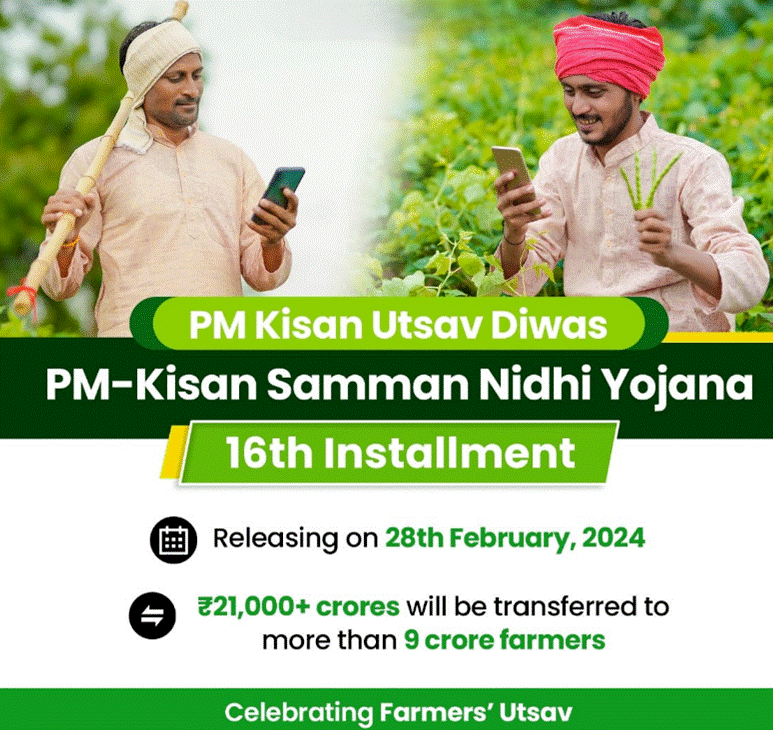
Eligibility Criteria
To avail of the benefits of PM-KISAN, the following eligibility criteria must be met:
- Landholding farmers: The scheme is aimed at farmers with cultivable landholdings of up to 2 hectares.
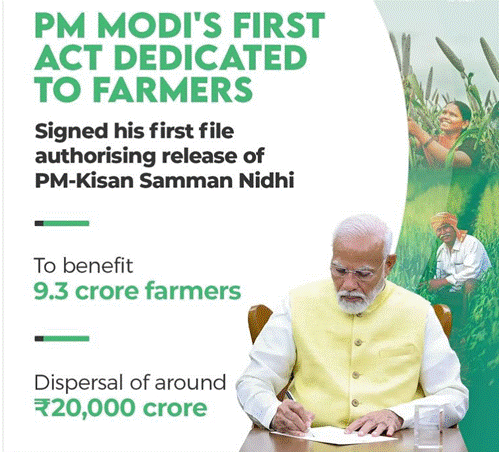
Exclusion criteria:
- Institutional landholders (e.g., corporations or organizations).
- Families where any member holds a constitutional post or has held elected positions (MPs, MLAs, Ministers, etc.).
- Government employees (current or retired) and pensioners receiving ₹10,000 or more in monthly pension (excluding Multi-Tasking Staff/Group D employees).
- Individuals who have paid Income Tax in the last assessment year.
- Professionals such as doctors, engineers, lawyers, etc., who carry out their practices as registered professionals.
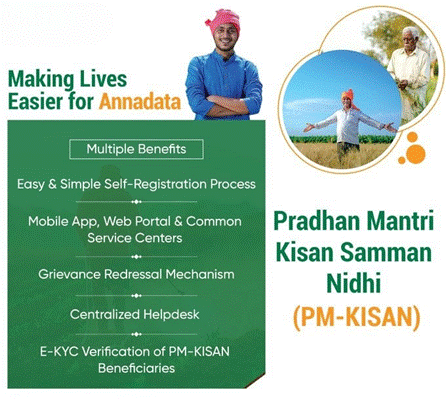
Benefits
- Amount: Eligible farmer families receive ₹6,000 annually, distributed in three equal installments of ₹2,000 each, paid every four months.
- Purpose: This amount helps farmers meet the costs of agricultural inputs and other related expenses, thereby ensuring proper crop cultivation and improving farm productivity.
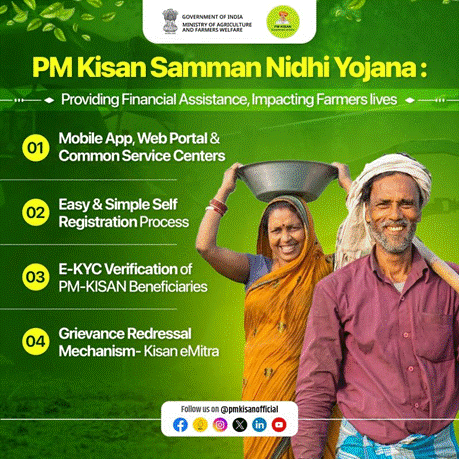
Additional Information
Details Required from Beneficiaries
- The states/UTs are responsible for collecting and maintaining a database of eligible beneficiaries, which includes:
- Name, Age, Gender, Category (SC/ST).
- Aadhaar Number (or alternate identification if Aadhaar is unavailable, such as voter ID, driving license, etc.)
- Bank Account Number and Mobile Number.
Responsibility of Identification
- It is the responsibility of State/UT Governments to identify and verify the eligibility of farmer families for this scheme.
Similar Programs by State Governments
- Several state governments have implemented similar initiatives to support farmers:
- Madhya Pradesh: Bhavantar Bhugtan Yojana provides compensation for the difference between MSPs and market prices.
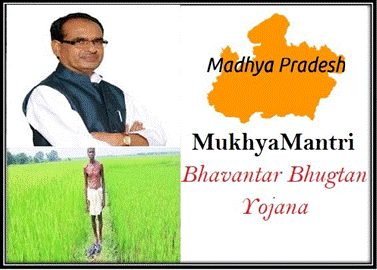
- Telangana: Rythu Bandhu Scheme offers ₹4,000 per acre per season to all farmers in the state.
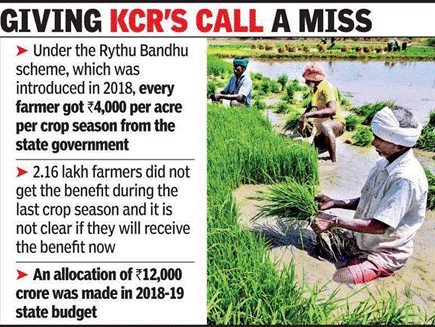
- Odisha: KALIA Scheme provides ₹5,000 per small and marginal farmer twice a year (₹10,000 annually).
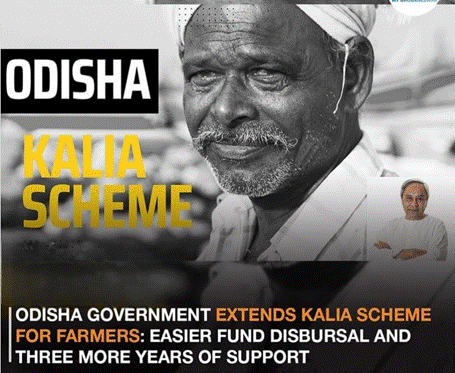
National Food Security Mission (NFSM)
Launched:
- 2007-08.
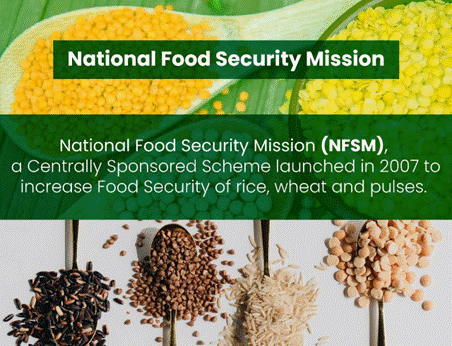
Ministry or Nodal Agency:
- Ministry of Agriculture & Farmers Welfare, Government of India.
Objectives
- The National Food Security Mission (NFSM) was launched to address stagnating food grain production and the growing consumption needs of the increasing population.
- The main objectives of the mission are to:
- Increase the production of rice, wheat, and pulses through area expansion and productivity enhancement.
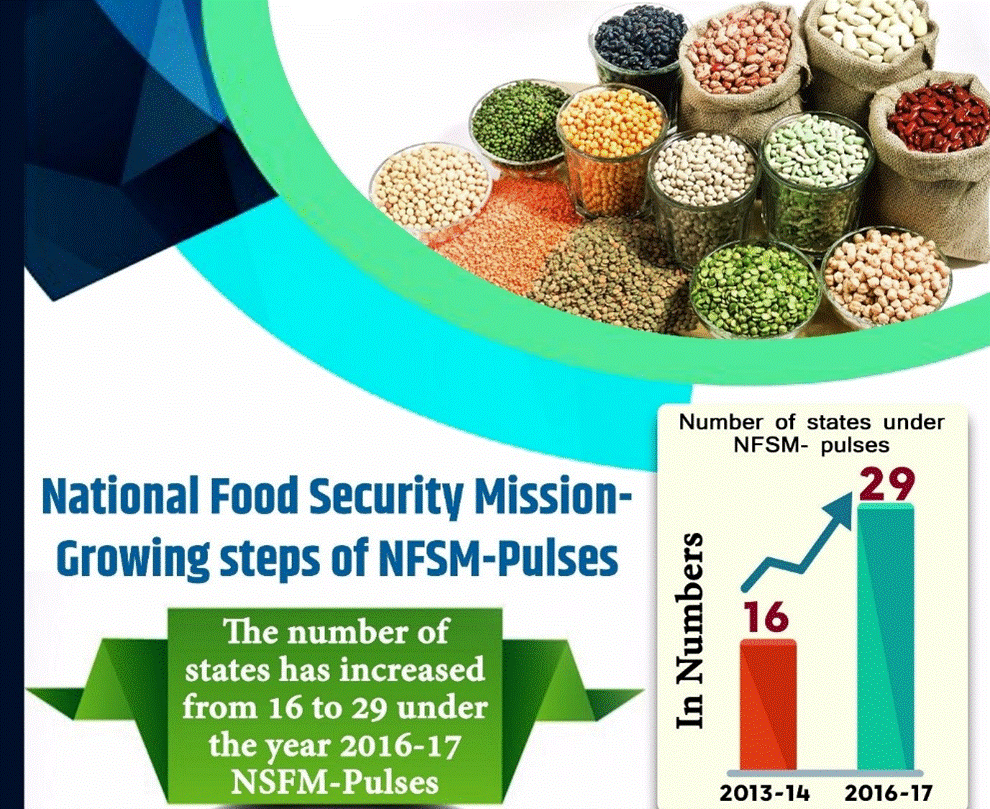
- Restore soil fertility and improve agricultural productivity.
- Create employment opportunities in the agricultural sector.
- Enhance the farm-level economy.
Beneficiaries
- The primary beneficiaries of NFSM are the farmers engaged in the production of rice, wheat, pulses, and coarse cereals across India.
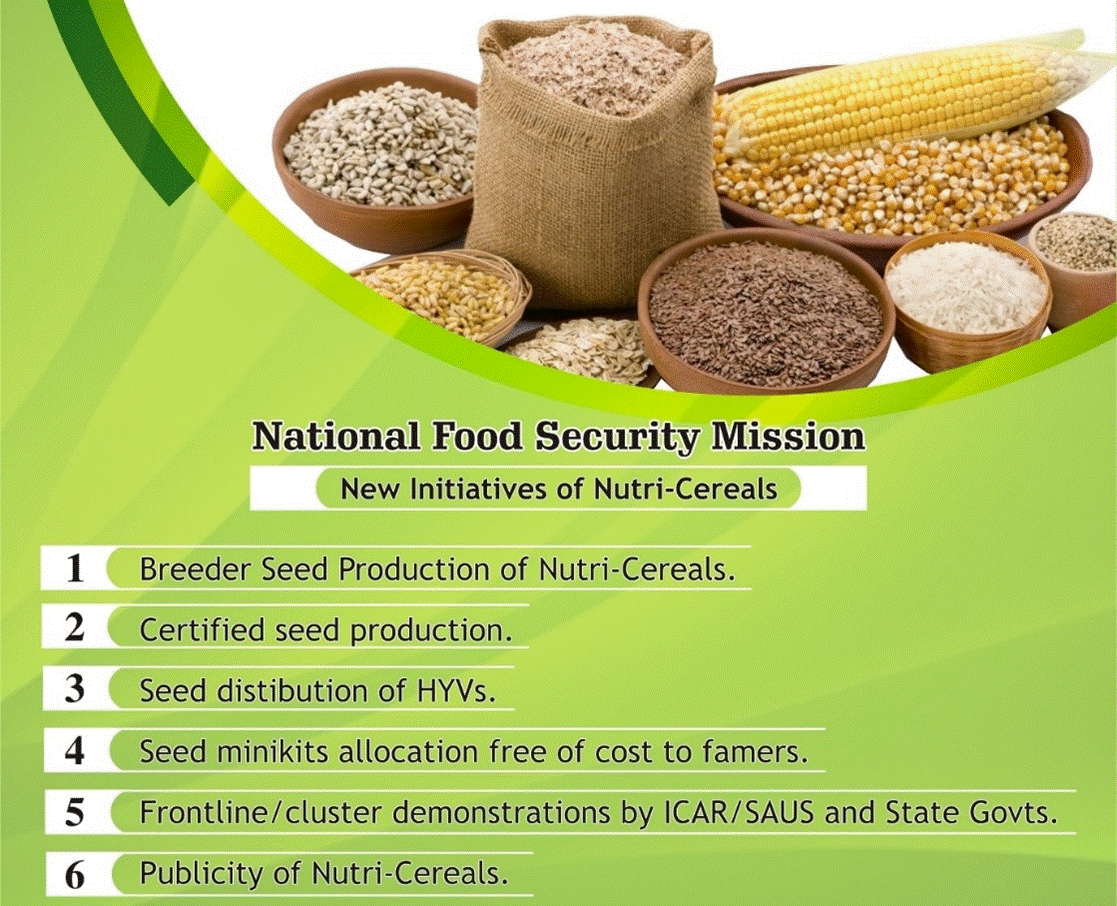
- The mission targets enhancing the productivity and sustainability of food grain production for small and marginal farmers and those in need of assistance in increasing yields.
Eligibility Criteria
- Farmers are eligible for assistance under NFSM if they are engaged in the cultivation of rice, wheat, pulses, coarse cereals, or other crops identified by the mission.
- The program is primarily focused on:
- Farmers in need of assistance for improving crop yields and soil health.
- Those willing to adopt improved agricultural practices, including the use of better seeds, fertilizers, and pest control methods.
Benefits
- NFSM provides several benefits to farmers, including:
- Financial assistance for inputs such as seeds, fertilizers, pesticides, and farm machinery.
- Distribution of seed mini kits for the promotion of new, high-yielding varieties of wheat and pulses.
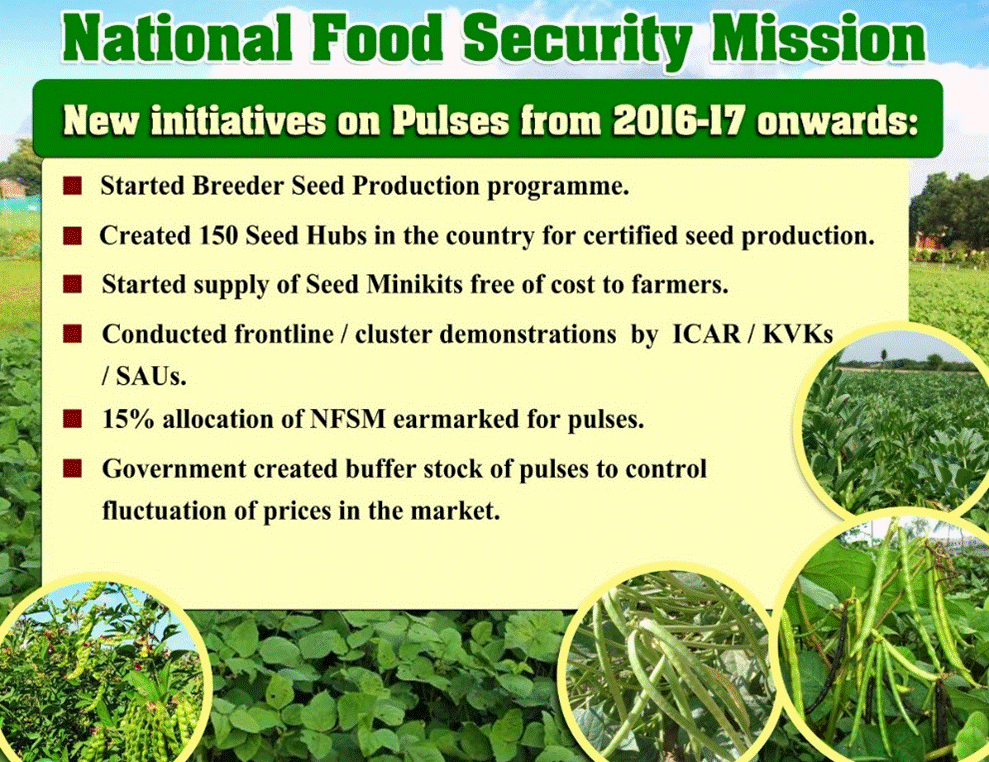
- Micronutrient support and gypsum to improve soil quality.
- Weedicides and plant protection chemicals to manage pests and diseases.
- Farm machinery support to enhance operational efficiency and reduce cultivation costs.
- Training and capacity-building for farmers through Farmers' Field Schools (FFS) and demonstrations of improved agricultural practices.
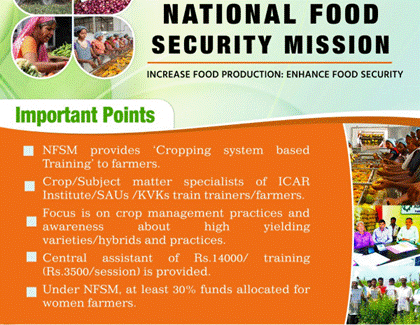
Additional Information
Funding Pattern
- From 2015-16, the scheme follows a 60:40 funding pattern between the Centre and State Governments.
- For North-eastern and hill states, the funding pattern is 90:10 between the Centre and the states.
Components under the Mission
- The mission includes several sub-components for different crops:
- NFSM-Rice
- NFSM-Wheat
- NFSM-Pulses
- NFSM-Coarse Cereals
- NFSM-Nutri-Cereals
- NFSM-Commercial Crops
National Level:
- General Council (GC), chaired by the Union Agriculture Minister, provides policy directions and reviews progress.
- NFSM Executive Committee (NFSMEC), chaired by the Secretary, Department of Agriculture & Cooperation, oversees implementation and approves State Action Plans.
State Level:
- State Food Security Mission Executive Committees (SFSMEC) have been constituted under the chairmanship of the Chief Secretaries of the participating states.
District Level:
- Agricultural Technology Management Agency (ATMA) and District Food Security Mission Executive Committees (DFSMEC) implement the mission's activities at the grassroots level.
Mission Interventions
- Farmers' Field Schools (FFS): Provide practical knowledge on pest and disease management.
- Integrated Pest Management (IPM): Reduce crop losses due to pests and diseases through eco-friendly methods.
- Weedicides: Timely provision of weedicides to manage weeds.
- Seed Mini kits: Distribution of new and promising seed varieties to farmers.
- Micronutrient and Gypsum: Financial assistance for micronutrient application and sulfur-rich gypsum to address soil deficiencies.
- Farm Machinery: Distribution of improved farm equipment to reduce costs and enhance productivity.
Performance of the Mission
- The mission has seen significant progress in terms of food grain production and productivity:
- Food grains production increased from 252.02 million tonnes in 2014-15 to 296.65 million tonnes in 2019-20, a growth of 17.71%.
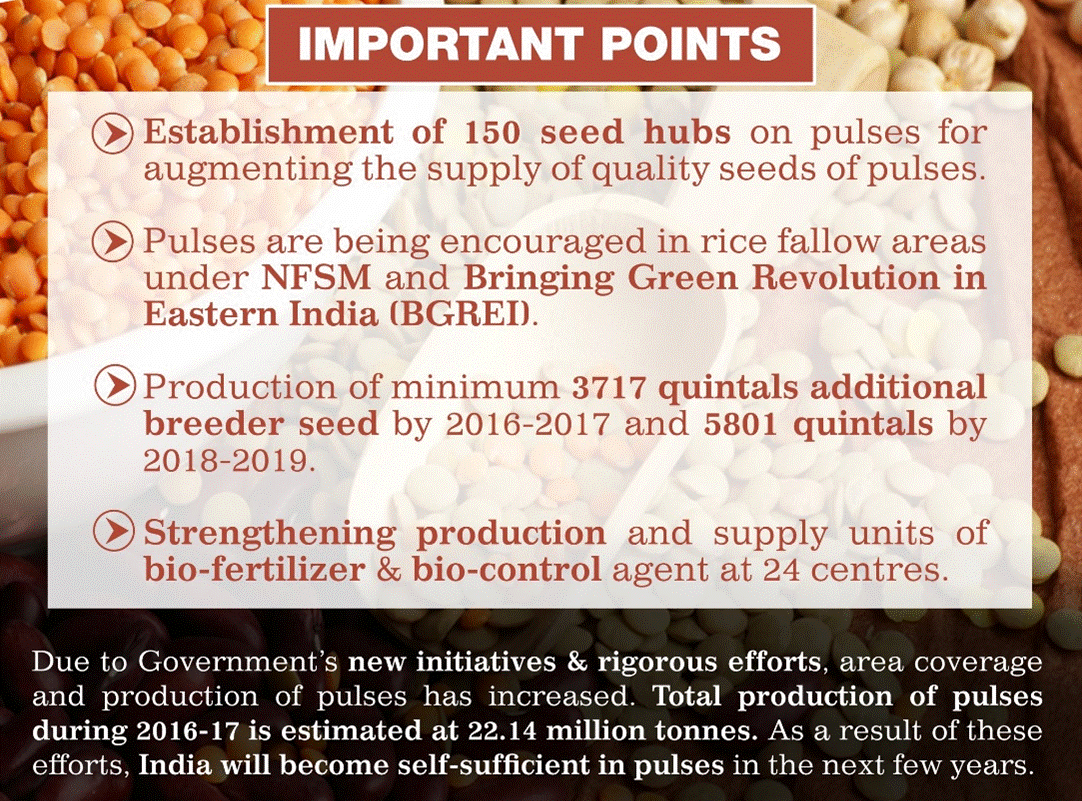
- Pulses production rose from 17.15 million tonnes in 2014-15 to 23.15 million tonnes in 2019-20, a 35% increase.
- The productivity of food grains increased from 2028 kg/ha in 2014-15 to 2325 kg/ha in 2019-20.
Challenges and Issues
- Underutilization of district-level consultants: Many district consultants and technical assistants were used for administrative tasks rather than technical services.
- Lack of focus in DFSMEC meetings: Poor coordination in district-level committees and infrequent, unstructured meetings have hindered the mission's progress.
- Limited farmer participation: Less than 50% of farmers have participated in Farmers' Field Schools and demonstrations.
- Delayed soil testing reports: While many farmers got their soil tested, the delay in receiving reports has hindered the timely application of inputs.
Poshan Abhiyaan Scheme
Launched:
- March 8, 2018.
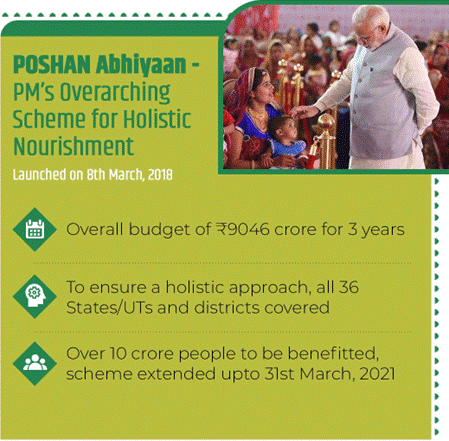
Ministry or Nodal Agency:
- Ministry of Women and Child Development (MWCD).
- Implementing Agency: The Ministry, along with state and district-level authorities, works in coordination with other ministries such as Health, Education, and Rural Development.
Objectives:
- Main Goal: To reduce malnutrition levels, particularly stunting, wasting, and underweight prevalence among children under six years, pregnant women, lactating mothers, and adolescent girls.
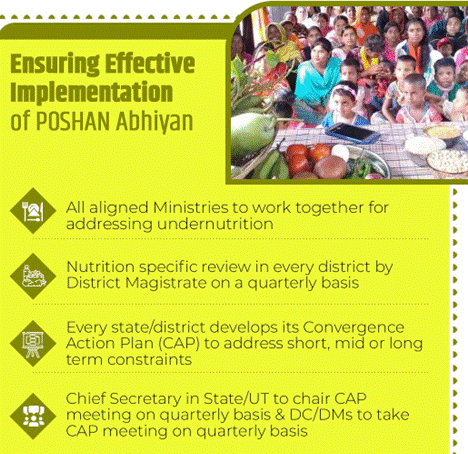
- Key Targets:
- Reduce undernutrition by 2% annually.
- Reduce anemia by 3% annually.
- Reduce low birth weight by 2% annually.
- Enhance maternal nutrition and promote early childhood care.
- Improve immunization, hygiene, and nutrition education.
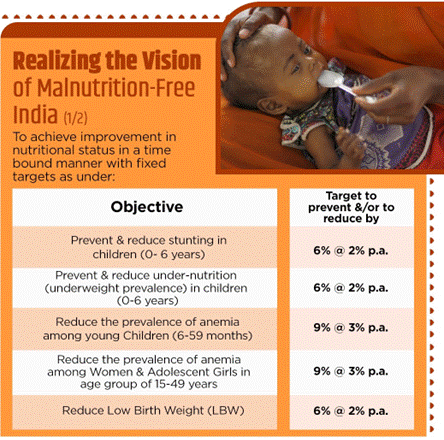
Beneficiaries:
Primary Beneficiaries:
- Children aged 0-6 years.
- Pregnant women.
- Lactating mothers.
- Adolescent girls (14-18 years).
Secondary Beneficiaries:
- Women and families involved in child healthcare, malnutrition prevention, and nutrition education.
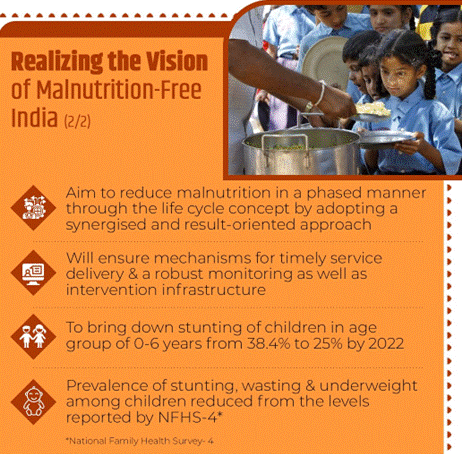
Eligibility Criteria:
- Children (0-6 years): Eligible for nutrition support, growth monitoring, and supplementation.
- Pregnant Women: Eligible for maternal nutrition, supplementation, and health services.
- Lactating Mothers: Eligible for nutritional counselling, food supplementation, and healthcare services.
- Adolescent Girls (14-18 years): Especially those in underserved regions (e.g., Aspirational Districts, North East) for targeted nutrition interventions.
Benefits:
- Direct Nutritional Support: Through the Supplementary Nutrition Programme (SNP), Anganwadi Services, and nutritional counseling.
- Health Benefits: Improved child growth, reduced prevalence of stunting, wasting, and underweight, as well as better maternal health outcomes.
- Social Behavior Change: Awareness campaigns like Poshan Maah and Poshan Pakhwada aim to instill healthy eating habits.
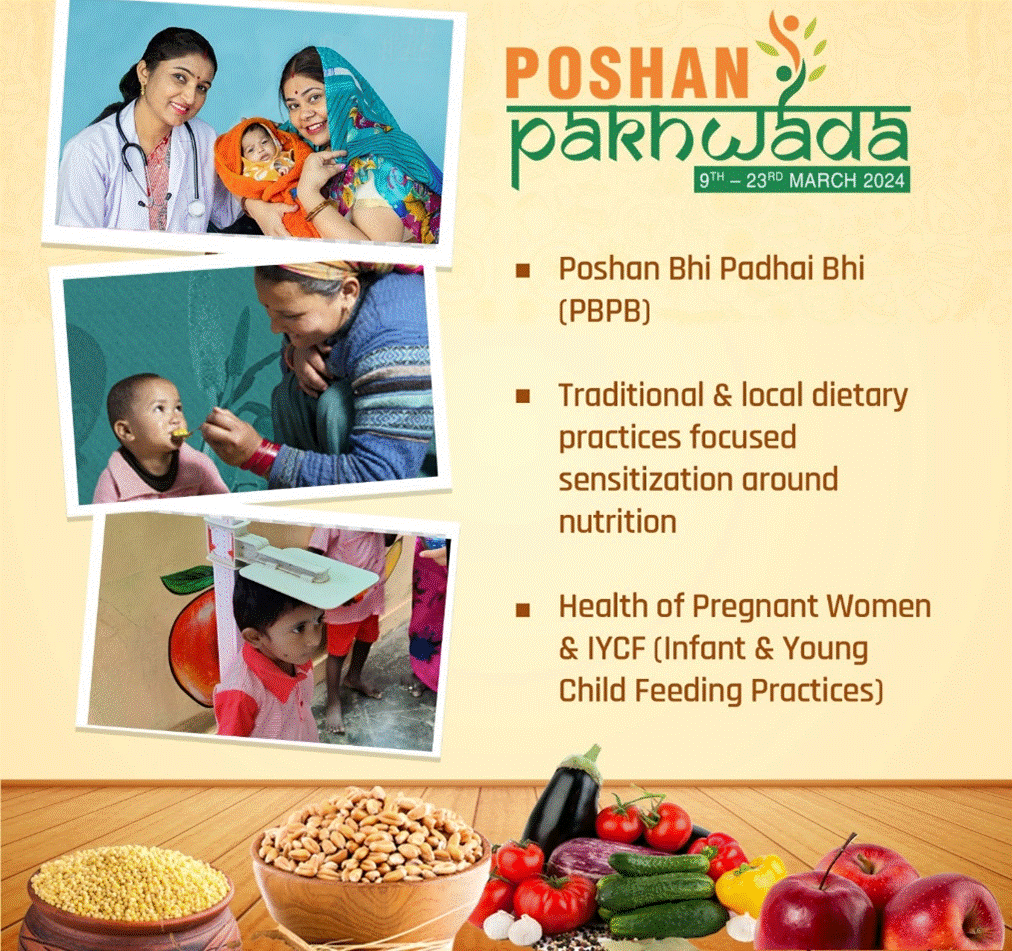
- Technology Integration: The Poshan Tracker system, a centralized ICT tool, helps in monitoring the nutritional status in real-time, improving service delivery.
- Access to Nutritious Food: Promotion of nutrient-dense foods, including millets, and better dietary diversity.
- Inclusion of Traditional Health Practices: Use of AYUSH (Ayurveda, Yoga, Unani, Siddha, and Homeopathy) for wellness and immunity.
Additional Information:
Poshan 2.0: Launched in 2022, it expanded the scope of Poshan Abhiyaan with an integrated approach, focusing on maternal health, early childhood care, and the treatment of Severe Acute Malnutrition (SAM) and Moderate Acute Malnutrition (MAM).
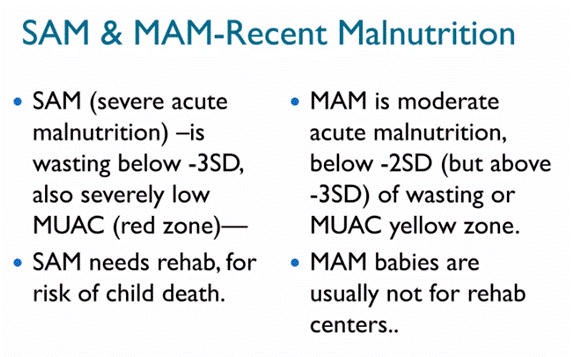
- Poshan Maah: A month-long campaign held every September to promote nutrition awareness, monitor growth, and educate about proper infant feeding and maternal health.
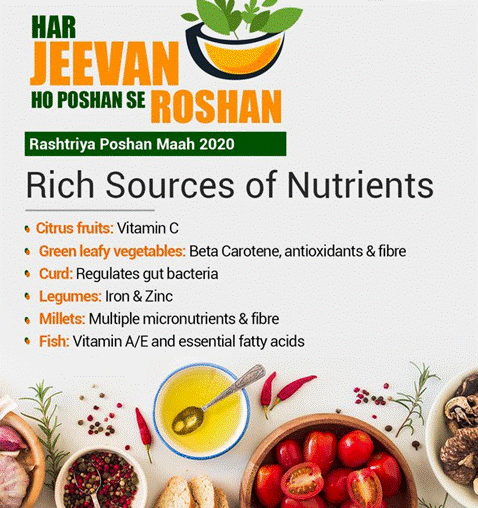
- Technological Innovations: Use of ICDS-CAS (Common Application Software) for better monitoring and service delivery through Anganwadi Workers using smartphones/tablets.
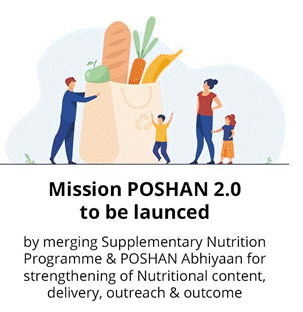
- Policy Reforms: Poshan Abhiyaan 2.0 promotes diet diversity, including the integration of millets and traditional health systems (AYUSH), strengthening the public health approach.
- Convergence: Encourages collaboration between multiple government departments (health, agriculture, sanitation) to create a holistic solution to malnutrition.
- Jan Andolan: A public movement encouraging active community participation in nutrition-related behavior change and awareness.
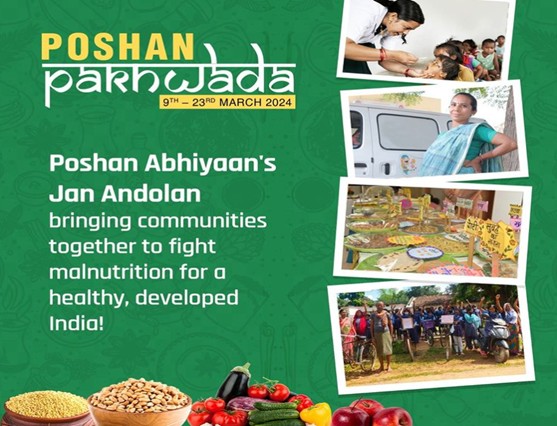
- Reports: Regular progress tracking through reports such as those from NITI Aayog.
- Continuous updates on the scheme’s outcomes in reducing malnutrition indicators.
-------------------------------------


